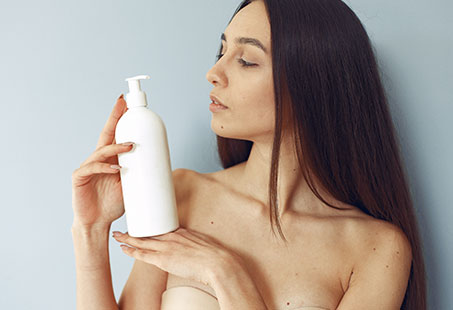Many people experience hair loss due to different causes, which leads them to resort to popular alopecia medications such as minoxidil.
This drug is not only used in the treatment of male and female pattern baldness but many other types of hair loss as well. And even though it’s been around since the 1970s, it’s still not understood how this drug works.
But that hasn’t made it any less effective. Many people have regrown their hair thanks to this drug. Still, it has some disadvantages, and there’s also no guarantee that this hair loss treatment will work for everyone.
Additionally, it can also cause some serious side effects. So, you shouldn’t just start using it without talking to your doctor first. This guide, however, will help you gain a deeper understanding of this drug.
What Is Minoxidil?
Minoxidil, available in oral and topical, is used for the treatment of high blood pressure and hair loss. It belongs to a class of drugs known as vasodilators – it widens or dilates the blood vessels.
As far as its use in the treatment of alopecia is concerned, it’s believed that this vasodilation is how it promotes growth. As more blood gets to the hair, so do the nutrients and oxygen.
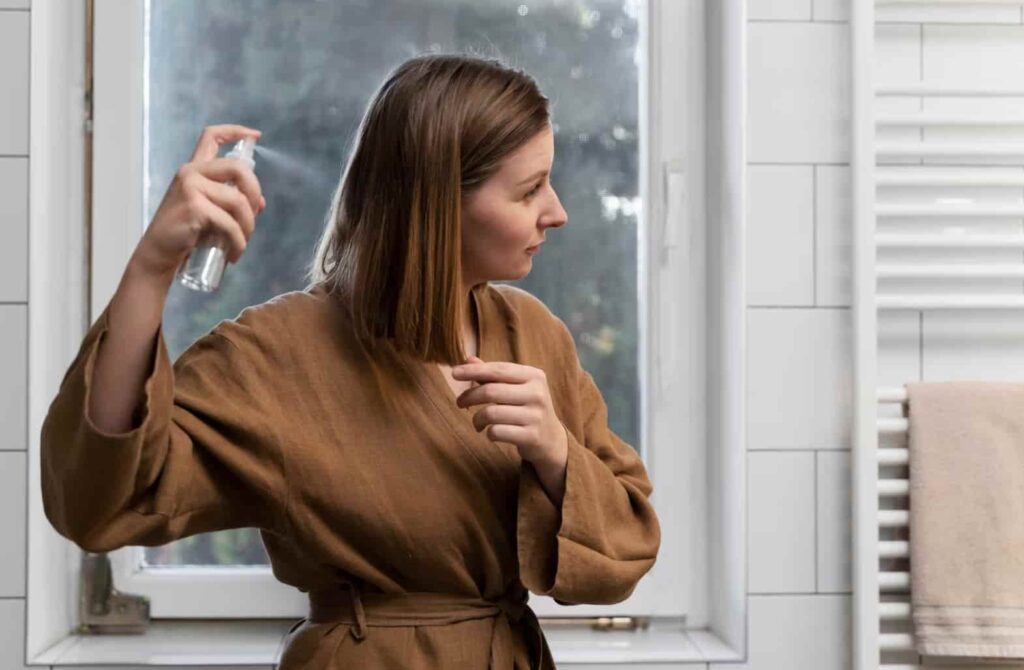
However, there are other theories as to how it happens (which we will discuss shortly). In any case, this drug has been used for treating the following types of hair loss:
- Androgenetic alopecia (caused by DHT hormone)
- Telogen effluvium
- Trichotillomania
- Alopecia areata
- Anagen effluvium
- Involutional alopecia
- Lichen planopilaris
- Frontal fibrosing alopecia
- Central centrifugal cicatricial alopecia (CCCA)
- Chemo hair loss
Additionally, it’s also used for the treatment of different hair shaft disorders like monilethrix, loose anagen syndrome, pili torti, etc. Minoxidil for facial hair like the beard and eyebrows is also used.
However, only its use for pattern hair loss has been approved by the Food and Drug Administration (FDA) in the US. In other cases, it’s prescribed “off-label.”
According to one review published in Drug Design, Development and Therapy, minoxidil is considered “safe and effective” for treating different hair disorders.
For hair loss, it’s mainly used in its topical form (foam or solutions) and is available in two concentrations: 2% and 5% for people above the age of 18.
While different studies have shown greater efficacy of minoxidil at 5%, a 2022 review published in the Journal of Dermatological Treatment, that the difference between the 5% foam and solution was not so significant from the 2% solution.
Still, in any case, minoxidil is the kind of drug that you have to keep using to continue seeing results. Once you stop taking the drug, your hair loss will resume in 3-6 months.
But there’s also some anecdotal evidence suggesting that topical minoxidil stops working after a certain amount of time.
The study mentioned above did report that the effectiveness of 2% minoxidil peaked in the first year and started to decline afterwards. Therefore, you should be prepared for this eventuality as well.
Minoxidil For Women
The topical form of minoxidil is available for women struggling with different types of hair loss.
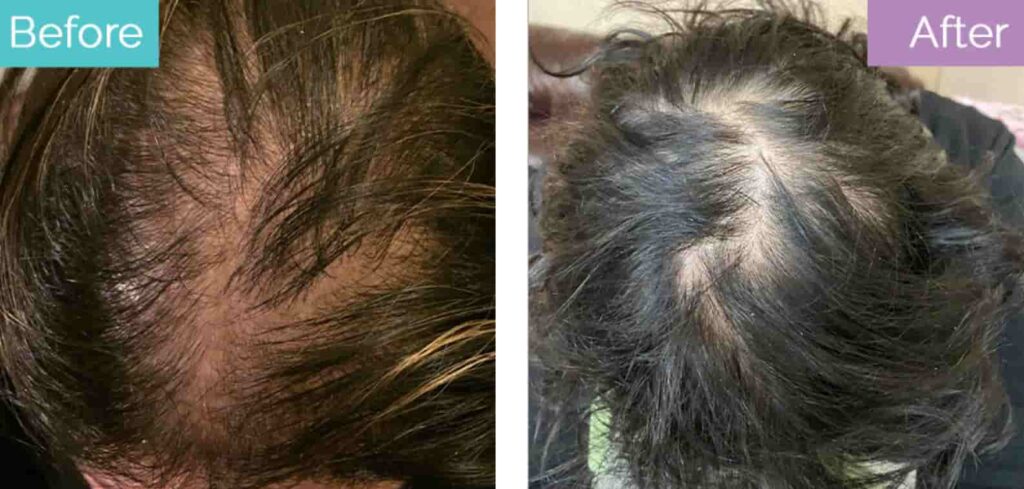
According to the NICE guidelines, 1 mL of regular strength Regaine (or Rogaine in the US are both the brand names for minoxidil) should be applied by women twice a day on the affected skin for pattern baldness.
And if no results are visible after a year of use, the drug should be discontinued.
The FDA has approved the usage of minoxidil at both 2% and 5% concentrations for female pattern baldness. However, it’s contraindicated for pregnant or breastfeeding women.
An interesting thing to note about minoxidil for women is actually its price. There are, unfortunately enough, reports of gender-based differences in the pricing of minoxidil for men and women.
Published as a research letter in JAMA Dermatology, a study found that women pay the same price for 2% “regular strength” minoxidil as men do for 5% “extra strength”. So, for the same cost, they’re getting a product that is likely to be less effective.
Since the generic version of this drug is cheaper, it’s possible that your doctor recommends you that instead.
Minoxidil For Men
Minoxidil for men is also quite effective and is especially popular in the treatment of androgenetic alopecia. It’s available as a 5% foam or solution for men.
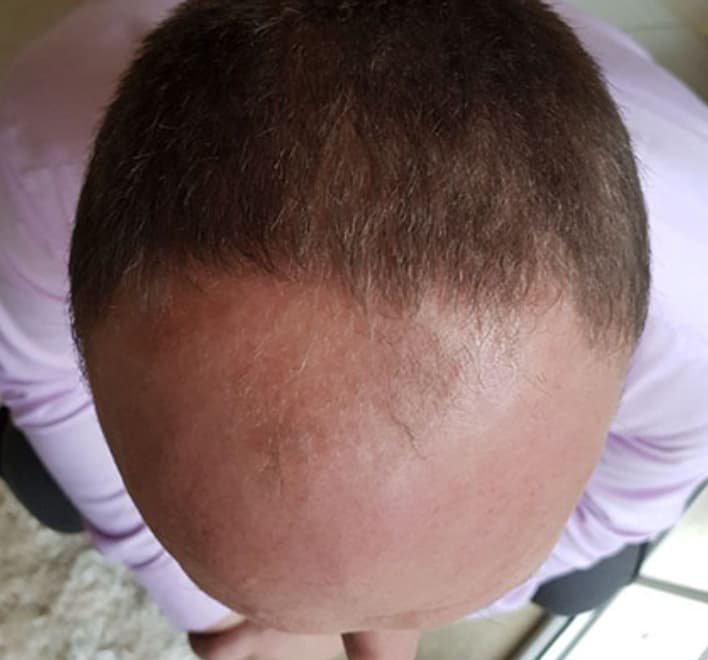
And if you’re wondering how often to use minoxidil, according to NICE’s guidelines, if the extra strength foam is being used, a “0.5 capful” should be used twice in the minoxidil target areas.
On the other hand, if it’s the solution, 1 mL should be used twice a day.
Furthermore, they recommend that if you’re using the foam and you see no difference after 4 months, you can stop using it. For the solution, the wait time is 1 year. And this is all for androgenetic alopecia only.
According to WebMD, minoxidil works for 2 out of 3 men, so you can consider trying it out as well. However, there are certain people who make better candidates for this drug.
Who’s The Best Candidate For Minoxidil?
Ideal candidates for minoxidil are essentially those who can get the best results from using this drug and it includes those who:
- Do not have severe follicular miniaturisation.
- Have started using it in the early stages of hair loss.
- Are younger (below 40).
- Have not experienced severe hair loss.
- Are losing hair on the top of their head.
Is Oral Minoxidil Better Than The Topical Form?
Hair loss is usually treated with minoxidil in topical form, however, it has also been studied in oral form.
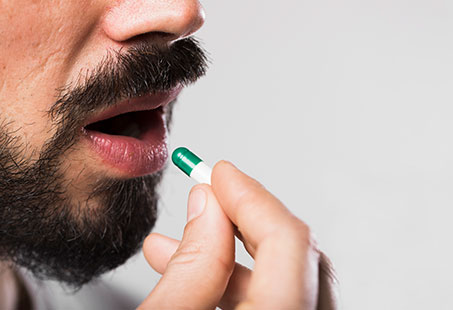
The reason why oral minoxidil (which is used for treating high blood pressure) is not used is because it can cause serious side effects. So, to overcome that problem, low-dose minoxidil is being considered as a safer alternative.
While it requires more research, one study published in the Journal of the American Academy of Dermatology compared 1 mg of oral minoxidil with a 5% topical solution for female pattern hair loss.
And the researchers concluded that low-dose oral minoxidil results were not different from the topical solution.
It was also safe and well tolerated. However, they still recommended the oral form for those who couldn’t tolerate the topical solution.
Where Can You Get Minoxidil In The UK?
Topical minoxidil is available as an over-the-counter drug. You don’t need a prescription for it, and you can buy it from any pharmacy, either in physical or online stores.
It should be noted that some pharmacies sell branded forms of this drug that they own, but its generic version is also available, and it might cost you less.
Since minoxidil for hair loss is considered “cosmetic,” you cannot get it on the NHS, so you’ll have to buy it privately.
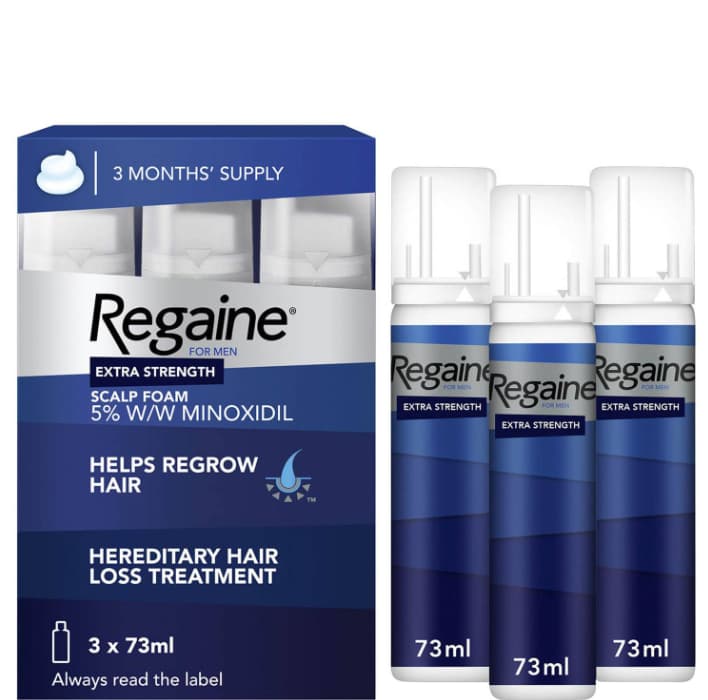
Usually, monthly supplies of it are available. For instance, a 3-month branded solution or foam is usually available for around £50 in the UK. The per-month subscriptions are usually more expensive.
Keep in mind that whether you’re buying the branded or generic versions, minoxidil is the active ingredient in them (so be wary of any “best minoxidil” products).
And since it doesn’t give permanent results, you’ll have to keep buying it (also note that it will come with an expiry date).
And if you’re wondering how to get oral minoxidil, it’s prescription only.
Does Minoxidil Work?
Minoxidil is considered very effective in the treatment of hair loss.
A recent study published in the Journal of the American Academy of Dermatology reported that minoxidil shrunk the size of the bald area in 62% of the participants (561 out of 904 people) with androgenetic alopecia.
But despite the fact that it’s been around for decades now, many still wonder: how does minoxidil work? Some say that it’s vasodilation that helps with minoxidil hair growth.
However, others say that it works by prolonging the duration of the anagen phase of hair growth. It’s one of the stages of the hair growth cycle in which active growth takes place.
By allowing the hair to stay in it for longer, hair growth with minoxidil can be improved. It’s been shown to increase the length of the hair and even its thickness.
Moreover, it’s believed to be anti-inflammatory with an anti-androgenic effect. So, these may also explain why it works on the hair.
Other than that, because it’s also used for the treatment of the autoimmune alopecia areata, it’s believed that it may affect the immune response as well.
Interestingly, it’s also used for treating scarring alopecia and that’s because it’s shown an “antifibrotic” effect, where it inhibits the formation of scar tissue.
How Long Does Minoxidil Take To Work?
It can take about 2 months for minoxidil to work. However, for maximum effects, you might have to wait for about 4 months in total. Your results may get even better after using it for a year.
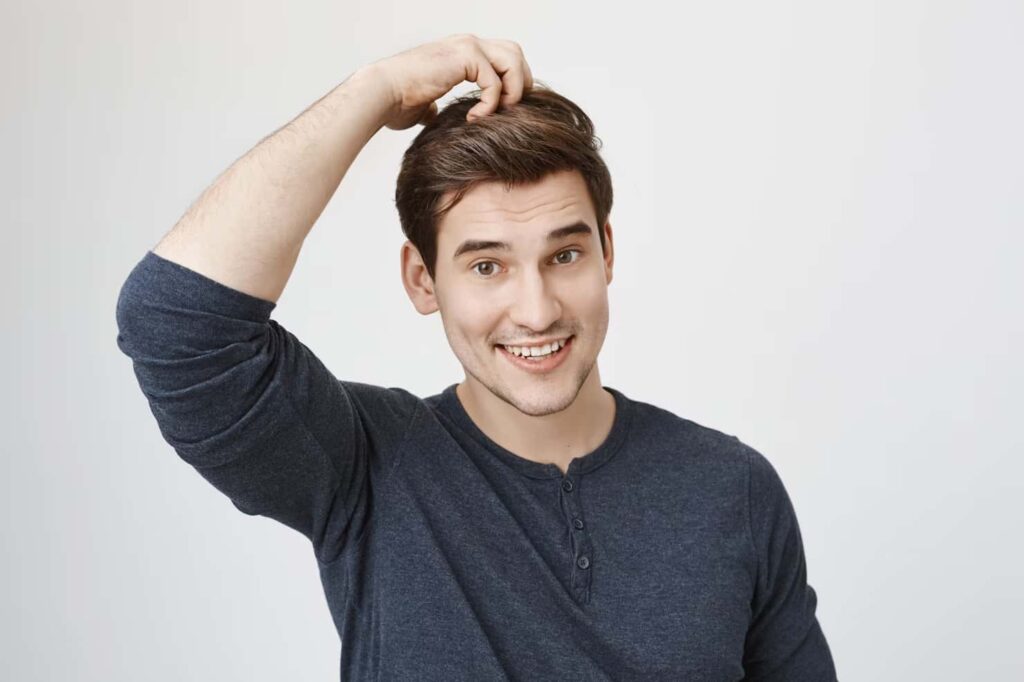
Since this process can be slow, it’s a good idea to take a picture of your scalp, so you can compare the before and after. If, however, you don’t notice any difference after this, your doctor might recommend discontinuing it.
What Is Minoxidil Used For?
Mainly, minoxidil is used for treating male and female androgenetic alopecia and high blood pressure.
Its oral form is FDA-approved for blood pressure, but only the topical version is approved for pattern baldness (not any other type of hair loss).
However, as mentioned above, it has many other off-label uses as well.
How Do You Use Minoxidil For Hair Loss?
For those wondering how to use minoxidil, it’s fairly simple.
Minoxidil for hair loss is usually applied directly to the target area as a topical solution or foam.
Before you use it, it’s important to make sure that both your hair and scalp are dry. Whether you’re using a dropper or pumping it directly into your hand, you need to wash your hands first.
That’s because, in either case, you’ll have to gently massage the drug into your scalp. For a more thorough application (don’t use more than the recommended dose), you can consider sectioning your hair.
Once you’re done, make sure to wash your hands so you don’t inadvertently transfer the drug elsewhere. While your scalp is still wet, this drug can stain any clothing item (like your pillowcase) so be careful.
But this doesn’t mean that you should try to blow dry your hair. Just let it air-dry, and do not shampoo your hair for at least 4 hours after this.
It may also be recommended that you have an interval of 12 hours between each application (if you’re using it twice a day). Make sure to follow the instructions on the packaging of the product you’re using, or do as your doctor recommends.
While on minoxidil, some people wonder if they can colour or relax it. According to the Mayo Clinic, you can do these things but make sure to wash your hair before colouring or relaxing it.
Minoxidil: How To Apply?
If you’re wondering how to apply minoxidil, it’s as follows:
- Wash your hands.
- Get the product into your hands or apply it directly to your scalp with a dropper applicator.
- Make sure to get all the affected areas with the recommended amount.
- Massage it in and wash your hands again.
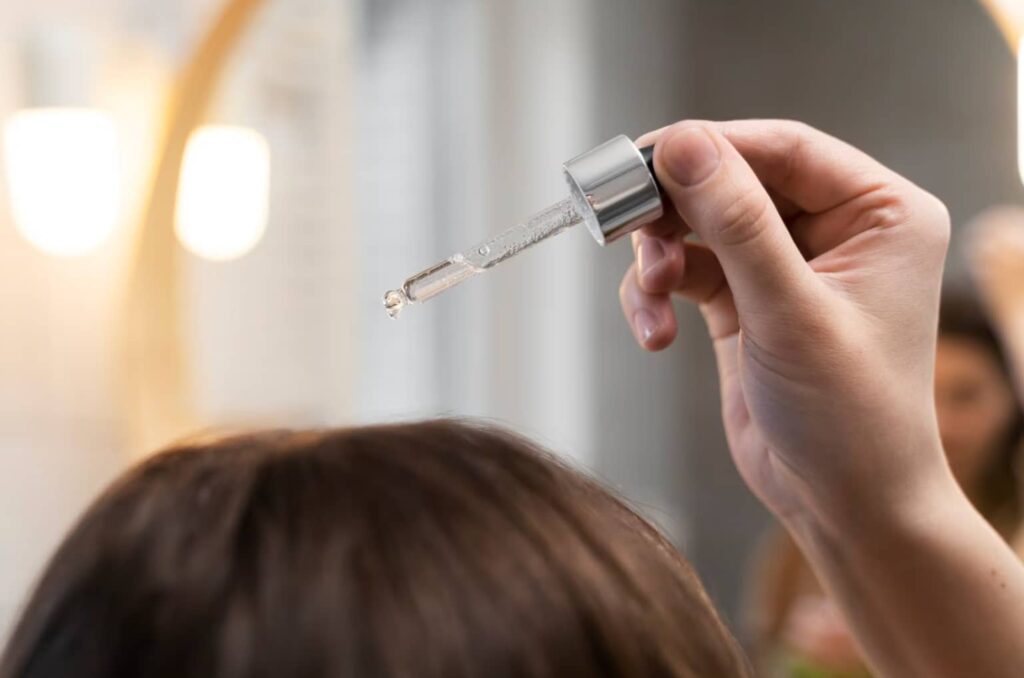
According to a study published in the Journal of Pharmaceutical Sciences, 50% of topical minoxidil is absorbed after 1 hour and more than 75% after 4 hours.
How To Apply Minoxidil Foam
If you don’t want your hair to look too greasy from minoxidil, foam might suit you better. Its application is also simple enough:
- Wash your hands.
- Pump the foam into your hand according to the recommended dose (you may be able to calibrate through the cap of the bottle).
- Apply it to the affected areas and gently massage it in.
- Afterwards, wash your hands and let your scalp dry.
According to a review in Drug Design, Development and Therapy, minoxidil foam delivers more of the drug in the affected area compared to minoxidil solution. It penetrates easily and is also less irritating.
You also won’t have to worry too much about it dripping onto your face because it dries more quickly.
What Are The Benefits Of Using Minoxidil?
One of the biggest benefits of using minoxidil for alopecia is that it can promote the growth and regrowth of your hair. Moreover, it can also thicken your hair, meaning the diameter of the hair shaft increases.
While its application can be a bit of a bother, if you keep doing it, you can continue to see results from its application. But keep in mind that it’s not a cure for pattern baldness. It’s only treating the symptom, which is hair loss.
What Are The Potential Risks Of Using Minoxidil?
It’s possible that you experience the following side effects while using minoxidil for your hair loss:
- Scalp irritation (with dryness and itchiness)
- Changes in hair type and colour
- Flaking
- Burning sensation
- Hypertrichosis (excessive hair growth)
- Acne (rare)
As far as the scalp irritation is concerned, it’s possible that it might be due to propylene glycol in the liquid form of minoxidil.
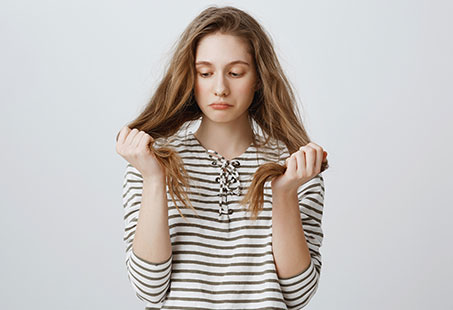
In this case, it’s usually advised that you switch to the foam because it doesn’t contain propylene glycol. However, you must talk to a medical professional about it first.
Other than that, hypertrichosis, which is excessive and unwanted hair growth on the face, is another problem associated with this drug. For some reason, it’s more common in women and those using the 5% solution.
Although, fortunately, this side effect is not permanent. Once the drug is discontinued, you can expect it to resolve in 1 or more months.
Other than the topical form, even the low-dose minoxidil has been reported to cause some serious side effects.
A multicenter study published in the Journal of the American Academy of Dermatology reported the following side effects of oral minoxidil:
- Lightheadedness and headache
- Fluid retention
- Increased heart rate (tachycardia)
- Swelling around the eyes
- Insomnia
Hypertrichosis is also another side effect of oral minoxidil. Some patients even ended up discontinuing the drug because of these.
Can Minoxidil Cause Hair Loss?
Minoxidil hair loss can occur due to telogen effluvium.
It’s one of the side effects of the drug in which the duration of the telogen (resting) phase of the growth cycle is shortened. As a result, hair sheds excessively, and this can continue for 2-4 weeks.
However, this type of hair loss is only temporary, so your hair should start to grow back. Although, understandably, this can be a bit distressing.
Conclusion
The answer to does minoxidil grow hair is yes. In fact, minoxidil is a very popular drug for treating hair loss. And while it’s very effective in treating different types of hair loss, it can cause some unwanted side effects. For instance, hypertrichosis can lead to withdrawal.
Another problem is that you need to use it for a long time because the gains from this drug aren’t permanent. Once you discontinue it, your hair will start to fall again. Over time, the cost of this drug can accumulate to a much bigger price tag.
If you’re worried about the cost of hair surgery, you can consider getting a Turkey hair transplant instead. An FUE hair transplant will give you both permanent and natural-looking results.
However, before you look into the treatments for hair loss, you must get a diagnosis by a qualified and experienced medical professional. They’ll create your treatment plan accordingly.
Reviewed and Approved by Trichologist Yaprak Yazan
FAQ
Does minoxidil change hair texture?
A change in hair texture is one of the side effects of minoxidil. It may become drier or wavier. If this happens, you should get in touch with your doctor.
Does minoxidil make hair thicker?
Minoxidil can make your hair thicker by increasing the thickness of the hair shaft. Also, by improving the overall density, it can make your hair look thicker.
How long does it take for minoxidil to work?
It can take around 4 months for minoxidil to start working. So, the results will take some time to show.
Can I use a derma roller with minoxidil?
Some researchers have found that derma rollers and minoxidil can promote hair growth better together. It may be because of better product penetration, but you should consult a doctor about using minoxidil with a derma roller first.
Can I comb my hair after applying minoxidil?
You can use a comb after applying minoxidil. However, it’s better to wait for the product to absorb and dry a little because it will come off on your comb otherwise.
What does minoxidil do?
Minoxidil can be used to promote the growth of hair, and it’s also used to treat high blood pressure.
Does minoxidil block DHT?
Minoxidil does not work by blocking the DHT hormone. But some research suggests it may have anti-androgenic potential.
Does minoxidil regrow hair?
Minoxidil can regrow your hair, but keep in mind that it doesn’t work for everyone, and its effectiveness might decrease.
Is minoxidil safe?
Topical minoxidil is considered safe for the treatment of hair loss. However, it does carry the risk of some unwanted side effects.
Does minoxidil cause acne?
According to the Mayo Clinic, one of the rare side effects of minoxidil is acne where the drug is applied.
Does minoxidil cause dandruff?
Another side effect of minoxidil is dandruff, which may occur because the alcohol in the product dries out the scalp.
Does minoxidil work on the hairline?
While there’s not a lot of research on minoxidil for a receding hairline, it’s still used for promoting growth there. Anecdotal evidence might suggest that it works there.
Does minoxidil work for a beard?
Minoxidil is also used for promoting the growth of beard hair, and it might be effective there as well.
